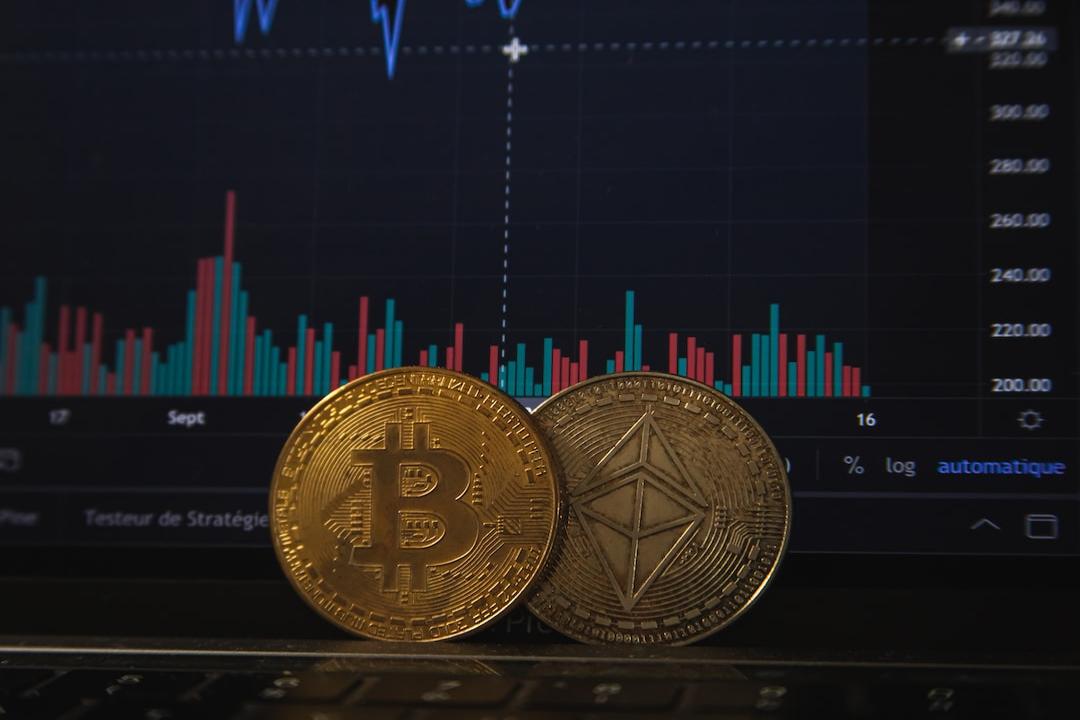CoinWorld reported:
Source: Grayscale; Translation: Bai Shui
Summary
Cryptocurrency valuations declined in early August due to concerns about the U.S. economic outlook and broader financial market volatility. Ethereum underperformed, possibly due to increased positions in the futures market and sell-offs by a few large holders.
If the U.S. economy continues on the path of a “soft landing,” Grayscale Research expects token valuations to rebound. However, even in a weaker economic environment, Grayscale Research believes that the downside risks for prices may be more limited than in the past.
Cryptocurrency assets and broader financial markets stabilized mid-week after experiencing significant declines from August 2 (Friday) to August 5 (Monday) (Figure 1). Although major token prices typically have low correlations with other asset classes, volatility in traditional markets may impact cryptocurrency valuations.
Figure 1: Bitcoin and Ethereum Decline in Early August

The direct cause of the decline was the weaker-than-expected U.S. employment report for July released on August 2. Specifically, the report showed an increase in the unemployment rate comparable to previous economic recession periods. Concerns about cyclical recession led to weak performance in cyclical assets like stocks, while traditional safe-haven assets like U.S. Treasuries, the yen, and the Swiss franc performed strongly (Figure 2). Non-U.S. equities and strategies shorting U.S. stocks performed particularly poorly. Both Bitcoin and Ethereum fell; while Bitcoin performed relatively well on a risk-adjusted basis, Ethereum underperformed compared to other crypto assets and many segments of traditional markets, which we will explore further below. Among major crypto assets, Solana significantly outperformed others.
Figure 2: Ethereum Underperformance

Despite Ethereum’s higher volatility compared to Bitcoin, its performance during the recent decline was more pronounced than usual. For example, Chart 3 shows the maximum percentage drop in Bitcoin prices since 2020, comparing it to the drop in Ethereum prices during the same periods. In these events, Ethereum’s price typically fell about 1.2 times more than Bitcoin’s price. The latest “crypto winter” (i.e., bear market period) showed similar relative performance. As of August 2024, Ethereum’s price has dropped approximately 1.8 times that of Bitcoin, indicating that Ethereum faces additional, unique downside pressure.
Figure 3: On Average, Ethereum’s Decline is Typically 1.2 Times That of Bitcoin

One reason for Ethereum’s relatively large price drop seems to be excessive long positions in perpetual futures. In May 2024, as the U.S. Securities and Exchange Commission (SEC) approved issuers’ 19b-4 applications for U.S. spot Ethereum exchange-traded products (ETPs), traders significantly increased total positions in perpetual futures (Chart 4), possibly anticipating further price increases upon obtaining regulatory approval; this approval was granted in July 2024, and U.S. spot Ethereum ETPs began trading shortly thereafter. Subsequently, some long positions were liquidated during the recent drop, accelerating the price decline. On August 4, Ethereum’s price fell 7.6% in just three minutes, with total liquidations in perpetual futures reaching $340 million that day. As the sell-off occurred during U.S. overnight trading and Binance’s spot prices were significantly discounted compared to Coinbase, it appears that the liquidations were primarily driven by leveraged traders in Asia.
Chart 4: Increase in Ethereum Futures Leverage in May 2024

Another potential factor contributing to Ethereum’s underperformance is the actual and expected sell-offs by a few large holders, including market makers Jump Crypto, venture capitalists Paradigm, and Golem Network (a crypto protocol with substantial Ethereum treasury assets). Although the exact amount of sell-offs cannot be determined, based on data from analysis platform Arkham Intelligence, Grayscale Research estimates that these entities held approximately $1.5 billion worth of Ethereum before they began transferring tokens (based on the Ethereum price at that time).
The decline in the number of active validators and the increase in Ethereum staking reward rates also indicate changes in the relatively sticky token supply, which may influence market sentiment.
Over the past week, broader financial markets stabilized. Perhaps most notably, the VIX index, which measures implied volatility in the U.S. stock market, peaked intraday above 60% on Monday before closing at 26% on Thursday (Figure 5). The market’s ability to maintain stability will depend on upcoming macroeconomic and corporate earnings data, as well as any policy responses from the Federal Reserve or other central banks. Key reports on the economic data front include weekly unemployment claims (released every Thursday), the Consumer Price Index report (to be released on August 14), and the next employment report (to be released on September 6). The Federal Reserve is likely to lower interest rates at its meeting on September 18, but the market is more focused on the policy path thereafter. Policymakers may provide further guidance at the Jackson Hole Symposium scheduled for August 22-24.
Figure 5: Decrease in Market Volatility Over the Past Week

If the U.S. economy avoids recession and continues on the path of a “soft landing,” Grayscale Research expects token valuations to rebound, with Bitcoin likely to retest its historical highs later this year. However, even in a weaker economic environment, Grayscale Research believes that the downside risks for prices may be more limited than in past declines.
These include relatively stable net demand from newly listed U.S. ETPs, insufficient credit provided by centralized financial institutions during this cycle, and the relatively lackluster returns of altcoins since the beginning of this year. Changes in the political landscape surrounding the crypto industry in the U.S. compared to previous cycles may also lower the downside risks for valuations.
Economic cycles are an inevitable feature of investing in nearly all asset classes, and the uncertainties of the macro outlook should be viewed as short-term risks for crypto investors. Meanwhile, Grayscale Research believes that the public’s tolerance for a severe economic recession is almost nonexistent and anticipates that policymakers will start printing money and consuming as soon as issues arise. Irregularities in monetary and fiscal policy are among the reasons some investors choose to invest in Bitcoin; thus, a period of economic weakness may reinforce the long-term investment thesis for Bitcoin.
References
[1] Economists often refer to this statistical pattern as the “Sam Rule.”
[2] For instance, during the previous cycle from peak to trough, both Bitcoin and Ethereum declined by the same magnitude. During the bear market from March 2022 to October 2023, Ethereum’s decline was 1.3 times that of Bitcoin. Source: Artemis, Grayscale Research.
[3] Source: Trading View, Coinglass.
[4] Source: Coinglass.
[5] On-chain liquidations may also be one of the reasons for Ethereum’s sharp price decline. For example, the lending platform Aave reported $239 million in liquidations on August 5. Source: Dune Analytics. Data as of August 8, 2024. For illustrative purposes only.
[6] Source: The Defiant, CoinDesk, Arkham Intelligence data.
[7] Specific dates are Paradigm on June 21, 2024, Golem on July 8, 2024, and Jump on July 24, 2024.
[8] Source: validatorqueue.com.
[9] In recent years, several centralized lending companies have gone bankrupt. Source: Blockworks.

